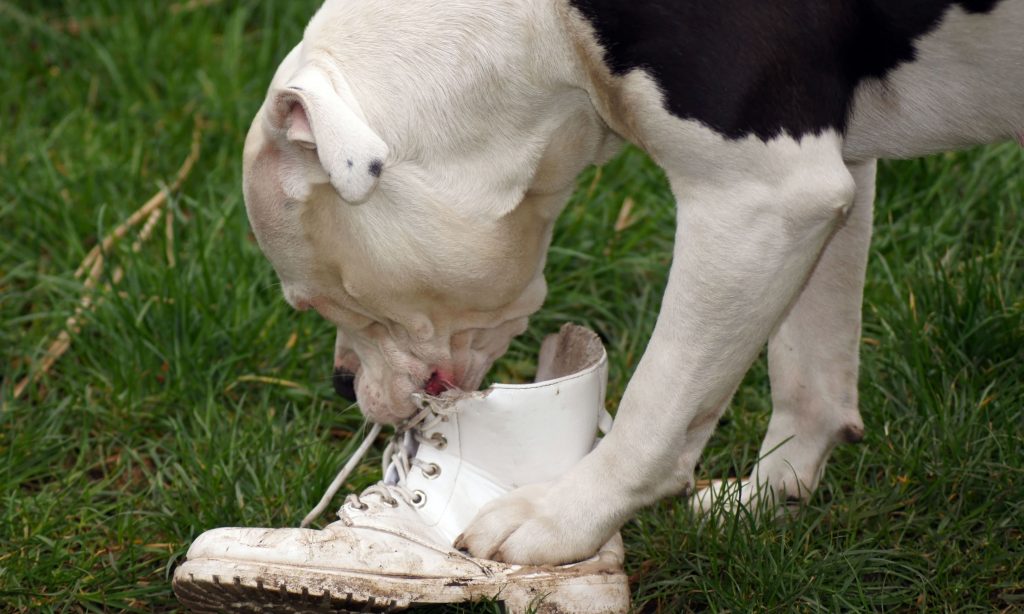The post’s aim is to educate dog owners on how to recognize and understand the underlying causes of certain behaviors in their pets and to provide strategies for addressing and improving these behaviors. It may also aim to help dog owners understand the importance of addressing behavioral issues in their pets and to provide information on the various resources and support that are available to help resolve these issues.

Dogs are intelligent, loving, and loyal companions, but they can also exhibit behavioral problems that can be frustrating and challenging for their owners. Understanding and addressing these behavioral issues is important for the well-being and happiness of both the dog and the owner.
Here are the top 10 behavioral problems in dogs and some tips on how to address them:
1. Separation anxiety:

Dogs are social animals and may become anxious or destructive when left alone. To address separation anxiety, try gradually increasing the length of time you leave your dog alone, providing toys and puzzles to keep them occupied, and establishing a routine for your departures and arrivals.
2. Barking:

Excessive barking can be a nuisance for both the dog and the owner. To address this behavior, try to identify the trigger for the barking (e.g. people or animals passing by the window) and address the root cause. Training your dog to be quiet on command can also be helpful.
3. Chewing:

Chewing is a natural behavior for dogs, but it can be destructive if directed towards inappropriate items. To address chewing, provide your dog with appropriate chew toys and supervise them when they are young to prevent them from developing the habit of chewing on inappropriate items.
4. Running away:

Some dogs are prone to running away, which can be dangerous behavior. To address this issue, it is important to make sure your dog is properly trained to come when called and to use a leash or a secure fence to keep them contained.
5. House soiling:

House soiling is a common issue for puppies, but it can also occur in adult dogs due to medical issues or lack of training. To address house soiling, make sure your dog is on a regular schedule for bathroom breaks, supervise them when they are inside, and use positive reinforcement to encourage appropriate elimination habits.
6. Aggression:

Aggression can be a serious issue in dogs and can occur for a variety of reasons, including fear, territorial behavior, and a lack of socialization. To address aggression, it is important to seek the help of a professional trainer or behaviorist and to work with your dog using positive reinforcement techniques.
7. Leash pulling:

Leash pulling can be frustrating for both the dog and the owner and can lead to tension and discomfort on walks. To address leash pulling, try using a front-clip harness and training your dog to walk calmly on a leash using positive reinforcement techniques.
8. Jumping:

Jumping can be a cute behavior when dogs are young, but it can become problematic as they grow larger. To address jumping, teach your dog to sit and stay when greeting people and use positive reinforcement to encourage calm behavior.
9. Begging:

Begging can be a cute behavior, but it can also lead to overweight and unhealthy pets. To address begging, ignore the behavior and reward your dog for sitting calmly when food is present.
10. Resource guarding:

Dogs may become possessive of their food, toys, or other resources, and may growl or snap if they feel threatened. It’s important to address resource guarding as soon as possible to prevent it from escalating. Working with a professional trainer or behaviorist can help you develop a plan to address this behavior.
By understanding and addressing these common behavioral problems, you can help your dog to be a well-behaved and happy companion. If you are struggling to address a behavioral issue with your dog, don’t hesitate to seek the help of a professional trainer or behaviorist.
Conclusion:
Behavioral problems in dogs can be frustrating and challenging for both the dog and the owner. By understanding the underlying causes of these behaviors and implementing strategies to address and improve them, dog owners can help their pets to be well-behaved and happy companions. If you are struggling to address a behavioral issue with your dog, don’t hesitate to seek the help of a professional trainer or behaviorist for guidance and support. With patience, consistency, and positive reinforcement, it is possible to resolve many common behavioral problems in dogs and to create a harmonious and enjoyable relationship with your furry friend.

Frequently Asked Questions
How can I tell if my dog has a behavioral problem?
There are a few signs to look out for that may indicate that your dog has a behavioral problem. These include destructive behavior, aggression towards people or other animals, excessive barking or whining, inappropriate elimination, and difficulty with training. If you notice any of these behaviors in your dog, it may be a good idea to consult with a professional trainer or behaviorist for guidance.
How can I address behavioral problems in my dog?
There are many strategies that can be effective in addressing behavioral problems in dogs. These may include providing appropriate toys and puzzles to keep your dog occupied, establishing a regular routine for bathroom breaks and exercise, using positive reinforcement techniques to encourage good behavior, and seeking the help of a professional trainer or behaviorist for more severe or persistent issues.
Are all behavioral problems in dogs caused by a lack of training?
No, not all behavioral problems in dogs are caused by a lack of training. Some behavioral issues may be due to underlying medical conditions, genetics, or past experiences. It is important to consult with a veterinarian or a professional trainer or behaviorist to determine the root cause of a behavioral issue and to determine the most appropriate course of action.
Can behavioral problems in dogs be cured?
Many behavioral problems in dogs can be improved or resolved with the right training and intervention. However, it is important to understand that some behavioral issues may be more challenging to address and may require ongoing management and support. With patience, consistency, and a commitment to addressing the underlying causes of behavioral issues, it is often possible to improve the behavior of dogs with behavioral problems.



